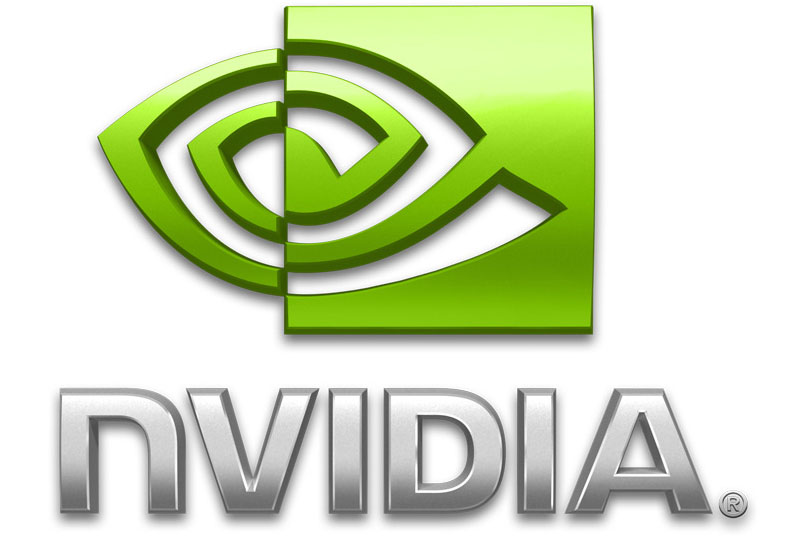Editorials
 It is a sad day when our lawmakers call a bill designed to trample innovation “reform”, but this is what has happened with the latest version of the “America Invents” act. The new bill has just passed the Senate and is expected to be signed into Law by President Obama in the near future. Now you might be wondering what I am talking about with this new bill. The new bill sponsored by Vermont Democrat Patrick Leahy has been lobbied for by the big corporations like Microsoft, Apple and others that tend to use concept patents as weapons to stifle competition instead of real and working inventions. These same companies also tend to “borrow” ideas, names and concepts from different places (like Apples use of the name iPhone which was owned by Cisco at the time).
It is a sad day when our lawmakers call a bill designed to trample innovation “reform”, but this is what has happened with the latest version of the “America Invents” act. The new bill has just passed the Senate and is expected to be signed into Law by President Obama in the near future. Now you might be wondering what I am talking about with this new bill. The new bill sponsored by Vermont Democrat Patrick Leahy has been lobbied for by the big corporations like Microsoft, Apple and others that tend to use concept patents as weapons to stifle competition instead of real and working inventions. These same companies also tend to “borrow” ideas, names and concepts from different places (like Apples use of the name iPhone which was owned by Cisco at the time).
What Apple and others have asked for (and gotten) is a change from first-to-invent to first-to-file. Basically what is happening here is that you do not actually have to produce anything anymore. All you have to have is a mountain of lawyers that can force any “concept” you want through the patent office. On top of all of that they have gotten a flat fee for Patents (although the fee is not actually known yet) which (so far) the Patent Office will get most of. However, that could change as Congress has a way of dipping into this money (having diverted about $900 Million in the last couple of years). They did tack on a review process for people to dispute patent that have been granted, but the time window for this is only 90 days from the date it is granted. Really the window should be more like one year, but that will never happen. There were some attempts to make this a real reform bill; some were asking for an outright ban on any diversion of funds, but the Bill’s sponsor said that anything like that would make the bill unlikely to pass (which shows you where some minds in Congress are). Some members of Congress are crowing as if they have just made sweeping reform when all they have done is encourage patent trolling.
Source PCWold
Discuss in our Forum
- Details
- By Sean Kalinich
- Hits: 3353
 There is a ton of contradictory information on the net today about just exactly what AMD and Globalfoundries are going to do with the next process. As we already know AMD’s next gen CPU Bulldozer will be a 32nm 8-core monster that has the potential to turn things around for AMD (at least on paper) that is if they can correct some of the past issues with memory performance. What happens from there we are not so certain about, nor is anyone else for that matter. This is despite the fact that multiple journalists ended up at a press event hosted by Globalfoundries.
There is a ton of contradictory information on the net today about just exactly what AMD and Globalfoundries are going to do with the next process. As we already know AMD’s next gen CPU Bulldozer will be a 32nm 8-core monster that has the potential to turn things around for AMD (at least on paper) that is if they can correct some of the past issues with memory performance. What happens from there we are not so certain about, nor is anyone else for that matter. This is despite the fact that multiple journalists ended up at a press event hosted by Globalfoundries.
So far the rumors run something like this; AMD and Globalfoundries are moving away from SOI (Silicon on Insulator). SOI has been the basis for AMD CPUs for some time and to see them move away from this is a little shocking. Oh, wait; that rumor was contradicted by Globalfoundries who now say they will be sticking with SOI moving forward. Next we hear that AMD won’t move to the next node (28nm) until 2013. This is actually somewhat believable as AMD tends to try and get the most money out of any process move. After all they have been on 45nm for a number of years! To think they won’t move to the next process node until 2013 is not unreasonable (although I really think 22nm is much more likely).
To add to this are the usual suspects commenting back and forth about what they think of each article or the writer in general. It makes trying to find out real information a tad tedious. To be honest about the only thing we know for certain is that AMD will launch Bulldozer sometime between the middle of September and the end of the Year. It will have 8 physical cores (in four CPU clusters) improved core to core communication and a few other tricks up its sleeve. We do not know much about the memory controller, but it appears from looking at the design to be a slightly modified revision of the one in the Phenom II. If this is the case and the optimizations are not spot on we could see this hinder what is certainly a bold CPU design from AMD. I guess we will all find out what is going on around the middle of September. We hope to be on the very short list of sites to review this new CPU for you, but again time will tell on that.
Discuss in our Forum
- Details
- By Sean Kalinich
- Hits: 3401
 Some specs on AMD’s next generation CPU Called Bulldozer have found their way on to the Internet. In what appears to be a conglomeration of leaked slides and other info from around the web. We took a look at some of this and compared it to what we know about AMD’s existing CPU architecture as well as what Intel has to offer with their Core line up.
Some specs on AMD’s next generation CPU Called Bulldozer have found their way on to the Internet. In what appears to be a conglomeration of leaked slides and other info from around the web. We took a look at some of this and compared it to what we know about AMD’s existing CPU architecture as well as what Intel has to offer with their Core line up.
First let’s talk about the existing AMD CPUs and why they tend to be so far behind Intel in some performance tests. The biggest issue that we have found is in the memory controller. Where the average Intel CPU shows 18-21GB/s worth of bandwidth even AMD’s top of the line Phenom II X6 tops out at between 14-16GB/s. This is a serious issue when you are dealing with multiple CPU cores and applications that are getting more and more bloated. But why is this an issue? One of the reasons is AMD’s caching structure. Back in the days when AMD was on top their memory and cache performance was a key component of this success. Part of this was also due to the extremely low latency of DDR (I can remember buying CAS 1 DDR modules which just flew). Then when the AM2 CPUs came out with reduced cache sizes and their DDR2 controllers (which were little more than the original IMCs improved to support DDR2) the much higher latency had a huge impact on AMD’s performance especially with the smaller cache available to the CPU cores. So while we knew the CPU was improved, the actual performance was negligible.
Moving forward into the Phenom and Phenom II AMD had even more problems with memory performance on these CPUs this was despite them trying to add in more cache (and associations). The issue still revolved around the fact that the IMC for these processors had still not changed much in terms of core design. Nor had the caching structure; sure it had gotten larger but its overall performance had not improved much.
Now for comparison let’s talk about the technology behind each IMC. AMD’s Phenom II has a 144-bit DDR3 controller under the hood which according to AMD should be able to get you up to 21GB/s of memory bandwidth. The fact that we have never seen that is due to the cache structure each CPU core has two 64KB L1 cache blocks (Data and Instruction) 512KB (16-way associative) to work with while the total L3 shared Cache is limited to 6MB (64-way Associative).
Compared to Intel’s Core IMC (dual channel only) the CPU has two 64-bit Memory controllers, which allows their very different caching structure to operate a little more efficiently. Intel’s Core i7 has two levels of L1 cache per core (again Data and Instruction) each are 32KB while the L2 cache is at 256KB per core (only 8-way associative) and the L3 cache is bumped up to 8MB (16-way associative). Now that 8MB is also shared with the IGP that is on the Core i7 and is also stretched by the extra thread per CPU, but the core design allows it to operate in a way that AMD’s just cannot (at this time). There is also a lot to be said for the streamlined instruction in the new Core CPUs as well as the smaller process size.
Bulldozer, on the other hand, shows up with two 72-bit wide DDR3 memory controllers (which still add up to 144-bits) this serves four Bulldozer modules (each has two Cores) . The Caching structure is also different you get L1 at 128KB (still broken into two 64 KB blocks), 8MB of L2 Cache (2MB per Bulldozer Module) and 8MB of L3 Cache. Both the L2 and L3 are 16-way associative. The last is interesting as it moves away from the massive 64-way Association that Phenom II had.
Of course we are still only seeing 1MB of L3 per real core, but we might have hope for AMD yet. That is IF these changes to the caching and memory will amount to something. Time will tell on this one as we all know and we all are certainly waiting to see just how this new CPU (the first real new CPU in a long time) from AMD will do. I would love to see this new CPU show that AMD can still produce great products, after all it will only push Intel in making improvements of their own and at that point… the consumer wins.
Image and source ComputerBase.de
Discuss this in our Forum
- Details
- By Sean Kalinich
- Hits: 4007
 Although the news of Google’s purchase of Motorola Mobility is days old we have to wonder about the slew of articles that have come out recently. We all know (whether we choose to admit it or not) that the purchase of Motorola was to bolster Google position in the market of the mobile OS. They, like others, have a lot to fear from Apple’s seemingly endless supply of accusations of copying, patent infringement and friendly venues. However, the deal is more than that in reality.
Although the news of Google’s purchase of Motorola Mobility is days old we have to wonder about the slew of articles that have come out recently. We all know (whether we choose to admit it or not) that the purchase of Motorola was to bolster Google position in the market of the mobile OS. They, like others, have a lot to fear from Apple’s seemingly endless supply of accusations of copying, patent infringement and friendly venues. However, the deal is more than that in reality.
Motorola has an 82 year legacy of working with wireless (not the wireless we think of today but radios as well). Because of this they not only have a nice stable of patents but also the technology and the innovation to survive in the cut throat world of mobile devices. The problem has been their “IBM” attitude in the past. Anyone that knows (or would like to Google) the IBM culture will know that the uniform was black slacks, white button down and tie. This is what you wore no matter where you worked. Motorola was the same way until very recently. That kind of rigidity in your culture does stifle innovation to a great degree. After all if you always wear the same thing, you can find yourself always thinking the same things. People that are locked down by their environment can become stagnant and, in extreme cases, ineffective.
So adding the fresh and open culture of Google to this can help out the struggling Motorola quite a bit; while the structure of Motorola may also help Google. It also gives Google something they want and need; a direct market for their OS. Google has been slowly closing the “Open Source” of Android with each successive release and we are looking at a completely closed source Kernel and OS in the very near future. Although Google invites other phone makers to use and customize Android’s UI they still want to have phones of their very own and with Motorola’s $86 Million dollar loss on top of their still popular “Droid” line of smart phones I am sure this looked like a ready-made situation for Google.
Motorola does get to keep operating as its own entity (for now) but you can rest assured that Google is also banking on those nice new Patents to keep Apple’s lawyers at bay.
Discuss in our Forum
- Details
- By Sean Kalinich
- Hits: 2791
 According to a few articles on the internet and a few things that are rumbling along the “usual lines” nVidia could already have working 28nm Silicon. Although no one seems to know what this silicon is a good guess would be Tegra. Jen-Hsun Huang, nVidia’s CEO, has been quotes are saying they have an entire team working to make this move much smoother than the one to 40nm.
According to a few articles on the internet and a few things that are rumbling along the “usual lines” nVidia could already have working 28nm Silicon. Although no one seems to know what this silicon is a good guess would be Tegra. Jen-Hsun Huang, nVidia’s CEO, has been quotes are saying they have an entire team working to make this move much smoother than the one to 40nm.
If you were not around for that one let’s just say it was a mess and nVidia lost a lot of money due to bad yields and other issues that were spawned by TSMC (Taiwanese Silicon Manufacturing Company) and their own rough transition to this die size. However, if you remember during this troubling time for both nVidia and TSMC there was an announcement that TSMC had already begun work moving to 28nm.
This announcement was made by TSMC around September/October which would make the timing for this about right. So, if TSMC has gotten their 28nm process right and nVidia is truly moving Tegra to 28nm first (and has working silicon) then the logical guess for this working Silicon is Tegra. The question now is which Tegra? It is highly unlikely to be Kal-El, but considering the claims that Jen-Hsun is making, a quad core ARM based SoC (System on Chip) that uses less power than the current dual core, we have to wonder. This is speculation of course but we do have some evidence for this supposition. It would also seem to fit the delays of this new mobile chip that we have heard about (now they are saying Holiday Season). It would not be beyond the realm of probability to see these SoCs ready for December and products out in January/February time frame which again could mean the Kal-El will show up as 28nm and not 40nm… But to be honest it is VERY unlikely.
Discuss in our Forum
- Details
- By Sean Kalinich
- Hits: 2997
More Articles …
Page 85 of 89



